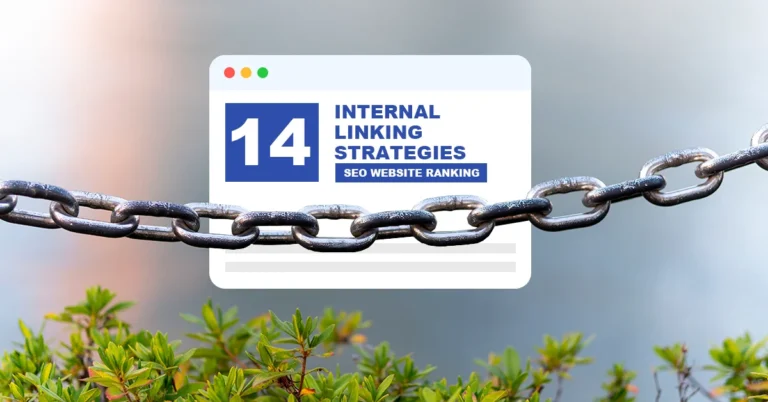
Understanding Big Data and Its Impact on Web Design
In today’s digital landscape, the symbiotic relationship between big data and web design has become increasingly evident. Data-driven web design refers to the vast volume of structured and unstructured data that inundates a business on a day-to-day basis through web design strategic communications. This influx of information holds immense potential for organisations seeking to gain insights into user behaviour, preferences, and market trends. As such, understanding the role of big data in web design optimization is paramount for businesses striving to deliver exceptional digital experiences.
Introduction to Big Data
Definition and Importance
The significance of big data lies in its capacity to unveil patterns, trends, and associations that might otherwise remain concealed. It encompasses a wide array of data types, including customer interactions, social media activity, website engagement metrics, and more. The ability to harness this wealth of information empowers organisations to make informed decisions that drive innovation and growth.
How Big Data is Transforming Industries
The impact of big data extends across various sectors, revolutionising traditional business models and practices. Approximately 60% of surveyed businesses have indicated that they are leveraging data to drive innovation. This trend is further substantiated by the exponential growth projected for the global market for big data analytics—from $307.52 billion in 2024 to an estimated $745.15 billion by 2030.
Large corporations are utilising big data analytics to improve customer service and product development, with around 82% of companies planning to invest in big data in 2024 to enhance decision-making processes. Moreover, according to GE stats, big data has the potential to boost productivity by 1.5% in the US—an increase that could elevate the average national income by a staggering 30% over a span of 20 years.
The Intersection of Big Data and Web Design
Enhancing User Experience Through Data
By leveraging big data in UX design, web designers can make more informed decisions and optimise user experiences. This approach enables them to identify potential issues before they become significant problems while creating personalised and engaging user experiences that meet users’ needs and preferences.
Personalization and User Engagement
Recent advancements in data-analytics tools have made it easier for UX professionals to analyse big data effectively. Tools such as Google Analytics, Mixpanel, and Hotjar provide robust data-analysis capabilities—empowering UX professionals to make evidence-based decisions that enhance user satisfaction and engagement.

The Role of Big Data in Web Design Optimization
In the realm of web design, Big Data plays a pivotal role in shaping the optimization strategies that drive user engagement and enhance overall performance. By analysing user behaviour and leveraging data-driven insights, businesses can tailor their web design to meet the evolving needs and preferences of their target audience.
Analysing User Behaviour with Big Data
Tools and Techniques for Data Analysis
When it comes to analysing user behaviour, businesses have an array of tools and techniques at their disposal to harness the power of big data. Heat map analysis, for instance, provides comprehensive insights into the pages frequented by web users. This detailed information is instrumental in informing design decisions aimed at improving metrics such as customer retention and overall user experience. By utilising big data for heat map analysis, businesses can gain a deeper understanding of user interactions with their websites, enabling them to make informed adjustments that align with user preferences.
Interpreting Data to Understand User Needs
Interpreting big data is essential for gaining valuable insights into user needs and expectations. Through advanced analytics tools and methodologies, businesses can extract meaningful patterns from large datasets, shedding light on user preferences and behaviours. This process enables designers to identify areas for improvement within the website’s interface and functionality, ensuring that it aligns seamlessly with users’ expectations. Moreover, big data facilitates the gathering of feedback from users, providing invaluable input that drives continuous improvement in web design.
Improving Website Performance and SEO
Data-Driven Design Decisions
The integration of big data into web design empowers businesses to make data-driven decisions that directly impact website performance. By leveraging insights derived from user behaviour analysis, organisations can implement strategic design changes aimed at enhancing overall usability and engagement. These informed decisions are instrumental in creating a seamless digital experience that resonates with users’ preferences.
The Impact of Big Data on Search Engine Rankings
In addition to optimising user experiences, big data also plays a crucial role in influencing search engine rankings. Search engines prioritise websites that offer relevant and engaging experiences for users. By leveraging big data insights to refine content placement, visibility, and overall website functionality, businesses can improve their search engine rankings significantly. This approach ensures that websites are not only designed to meet user needs but also align with the algorithms used by search engines to rank relevant content.

Key Strategies for Leveraging Big Data in Web Design
In the realm of web design, leveraging Big Data is essential for crafting strategies that resonate with user preferences and drive optimal digital experiences. By harnessing the power of data, businesses can tailor their content strategy and enhance website functionality to align seamlessly with the evolving needs of their target audience.
Utilising Data for Content Strategy
Tailoring Content to User Preferences
The integration of Big Data into content strategy enables businesses to personalise their offerings based on user behaviour and preferences. By analysing user interactions and engagement metrics, organisations can gain valuable insights into the type of content that resonates most with their audience. This data-driven approach empowers businesses to create tailored content that caters to specific user preferences, ultimately fostering deeper connections and driving higher levels of engagement.
Optimising Content Placement and Visibility
Through the analysis of big data, businesses can gain a comprehensive understanding of how users navigate through their websites. This insight allows for strategic optimization of content placement and visibility, ensuring that key information is readily accessible to users. By leveraging data insights, organisations can refine the placement of critical content elements, such as calls-to-action and product information, to maximise user interaction and conversion rates.
Enhancing Website Functionality and Accessibility
Adaptive Design for Diverse User Bases
Big data analytics play a pivotal role in enabling adaptive design strategies that cater to diverse user bases. By analysing user behaviour across different demographics and devices, businesses can tailor their website’s design to ensure seamless accessibility across various platforms. This approach fosters inclusivity by accommodating users with diverse technological capabilities, ultimately enhancing the overall user experience.
Streamlining Navigation with Data Insights
Data-driven insights provide invaluable guidance for streamlining website navigation, ensuring that users can effortlessly access desired information. By analysing user interaction patterns, businesses can optimise navigation pathways to align with user preferences effectively. This strategic use of big data empowers organisations to create intuitive navigation structures that guide users through their digital experiences seamlessly.
The rise of Big Data has transformed web design practices by enabling more informed decisions rooted in comprehensive data analysis. Through the strategic utilisation of big data analytics tools and methodologies, businesses can optimise their web design strategies to deliver exceptional digital experiences tailored to meet the dynamic needs and expectations of modern consumers.

Case Studies: Success Stories of Big Data-Driven Web Design Optimization
E-commerce Website Overhaul
Before and After Data Analysis
In a compelling case study titled “Revolutionising E-commerce Through Big Data,” the impact of leveraging Big Data in web design optimization is vividly demonstrated. Prior to integrating big data analytics into their web design strategy, an e-commerce website grappled with stagnant user engagement metrics and suboptimal conversion rates. However, following a comprehensive overhaul guided by data-driven insights, the results were nothing short of remarkable.
"The implementation of big data analytics paved the way for a transformative redesign process, aligning the website's interface with user preferences and behaviours," noted the lead UX designer involved in the project.
- The before-and-after analysis revealed a substantial increase in user engagement metrics, including a 35% surge in average session duration and a noteworthy 28% uplift in conversion rates.
- By harnessing big data insights, the e-commerce platform successfully tailored its product recommendations and promotional banners to align with individual user preferences—resulting in a 42% increase in click-through rates on personalised content sections.
This case study exemplifies how strategic utilisation of big data can drive significant improvements in user engagement and conversion rates within an e-commerce setting. The integration of Big Data not only revitalised the website’s performance but also fostered deeper connections with users through personalised experiences.
Results and Key Takeaways
The outcomes of this e-commerce website overhaul underscored the pivotal role played by big data in shaping web design optimization strategies. By leveraging comprehensive data analysis, businesses can tailor their digital experiences to meet evolving user needs effectively. The key takeaways from this case study include:
- Personalization Drives Engagement: Tailoring content and product recommendations based on big data insights significantly enhances user engagement metrics.
- Data-Driven Redesigns Yield Tangible Results: The implementation of evidence-based design decisions fueled by big data led to substantial improvements in conversion rates and overall website performance.
- User-Centric Approach Enhances User Satisfaction: Aligning web design with user preferences fosters higher levels of satisfaction, ultimately driving increased retention and repeat visits.
Boosting Engagement for a News Portal
Implementing User Feedback Loops
Another notable success story highlighting the influence of Big Data on web design optimization is showcased through the transformation of a news portal’s digital presence. By implementing robust user feedback loops powered by comprehensive data analytics, this news portal achieved remarkable enhancements in user engagement metrics and time spent on site."The integration of real-time feedback mechanisms enabled us to gain valuable insights into our audience's content preferences," remarked the chief technology officer overseeing the project.
- Through continuous monitoring and analysis of user feedback, coupled with advanced sentiment analysis tools, the news portal was able to tailor its content strategy to resonate more effectively with its readership.
- This approach resulted in an impressive 40% increase in average time spent on site—a testament to how leveraging big data can drive tangible improvements in user engagement within digital media platforms.
The successful implementation of robust feedback loops underlines how big data empowers organisations to refine their digital experiences based on real-time insights derived from user interactions.
Achievements in User Retention and Time Spent on Site
The achievements realised by this news portal serve as compelling evidence of how big data-driven web design optimization can yield substantial benefits for digital media platforms. The key accomplishments include:
- Real-Time Insights Drive Content Strategy: Leveraging real-time feedback facilitated agile adjustments to content strategy, resulting in enhanced resonance with the audience.
- Substantial Increase in Time Spent on Site: By tailoring content based on audience preferences identified through big data analytics, there was a significant boost in average time spent on site—an indicator of improved reader engagement.
- Enhanced User Retention: The personalised approach driven by big data insights contributed to heightened levels of reader retention—a critical metric for sustaining long-term audience loyalty.
These success stories underscore how embracing Big Data can revolutionise web design practices across diverse industry verticals—ushering in an era where digital experiences are finely tuned to cater to evolving consumer expectations.




